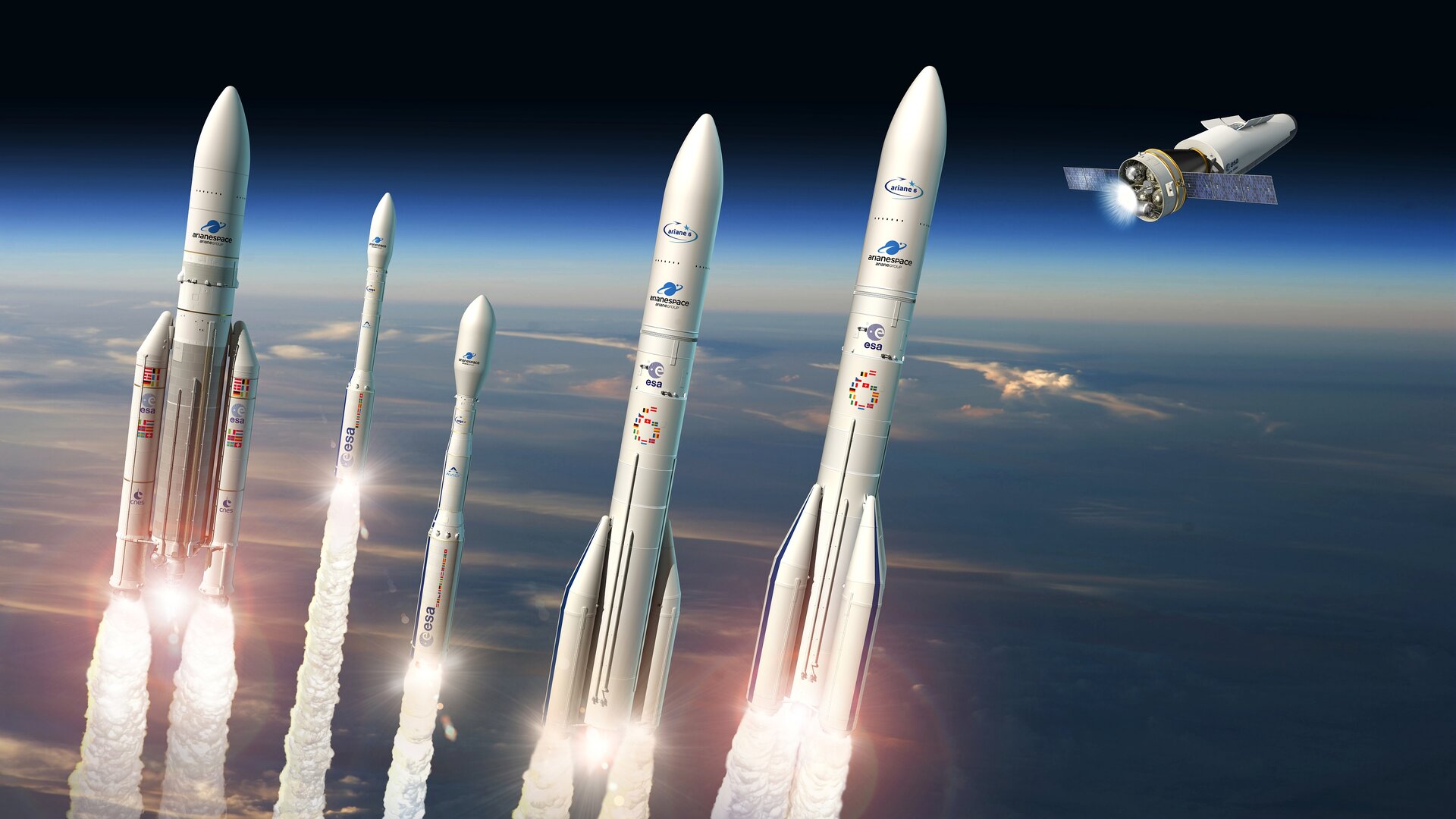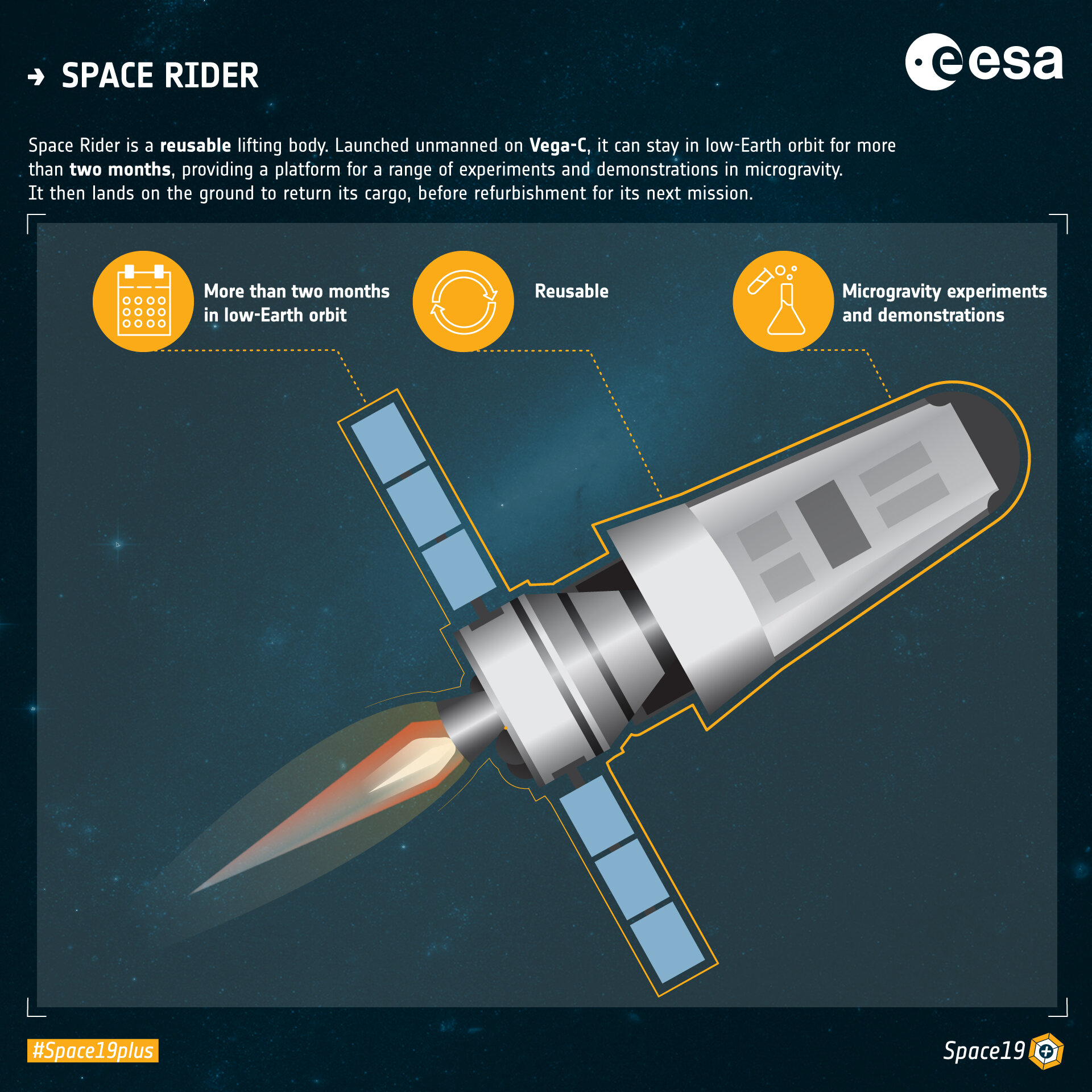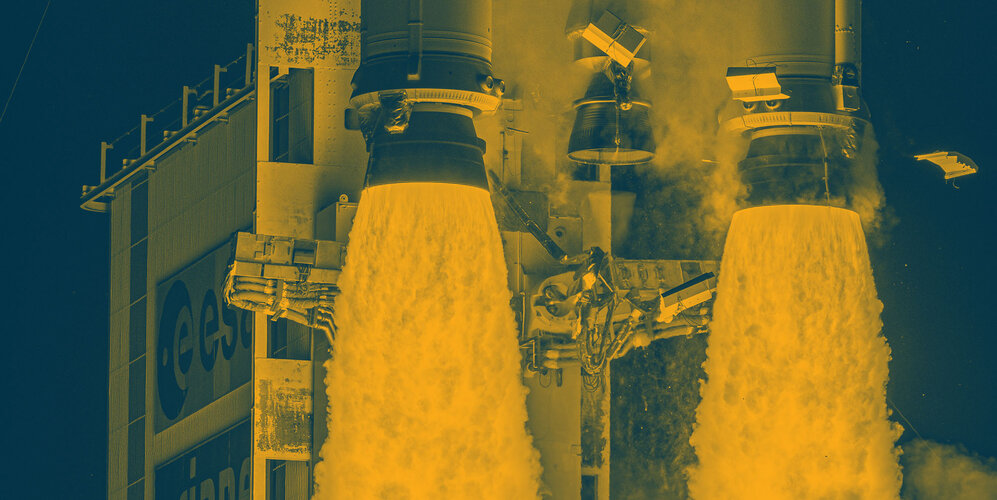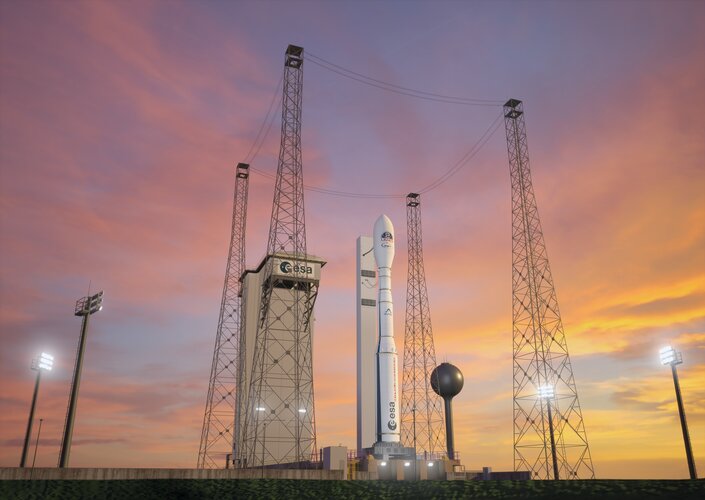Access to space and back
Rockets are the backbone of all space-based endeavours. ESA in partnership with industry is developing next-generation space transportation vehicles for the next decade that will ensure independent access to space, enable activities in space and return from space for Europe.
Currently, the Ariane and Vega family of rockets operate from Europe’s Spaceport situated in the northeast of South America in French Guiana, an overseas department of France.
Ariane 6, Vega-C, and the reusable Space Rider for return missions are extending Europe’s capabilities.

Meanwhile, ESA looks to the future of space transportation through its Future Launchers Preparatory Programme (FLPP), weighing up the opportunities and risks of different launch vehicle concepts and associated technologies.
Its demonstrators and studies hone emerging technologies to give Europe's rocket builders a valuable head-start as they begin the demanding work of turning the chosen design into reality.
Technologies are selected on their potential to reduce cost, improve performance, improve reliability, or on their ability to fulfil the specific needs of an identified system, demonstrator or mission.

ESA aims to boost commercial initiatives that offer space transportation services to space, in space, and returning from space.
To achieve this, ESA nurtures industrial entrepreneurship and stimulates growth and competitiveness within the privately led and funded space sector in Europe via Boost! – ESA's Commercial Space Transportation Services and Support programme.
This programme also supports ESA Member States in implementing national space transportation objectives in the field of spaceports, testing facilities and associated services.
ESA continues to enhance all its programmes and introduce new ideas to help Europe work together to build a robust space transportation economy.















 Germany
Germany
 Austria
Austria
 Belgium
Belgium
 Denmark
Denmark
 Spain
Spain
 Estonia
Estonia
 Finland
Finland
 France
France
 Greece
Greece
 Hungary
Hungary
 Ireland
Ireland
 Italy
Italy
 Luxembourg
Luxembourg
 Norway
Norway
 The Netherlands
The Netherlands
 Poland
Poland
 Portugal
Portugal
 Czechia
Czechia
 Romania
Romania
 United Kingdom
United Kingdom
 Slovenia
Slovenia
 Sweden
Sweden
 Switzerland
Switzerland




































